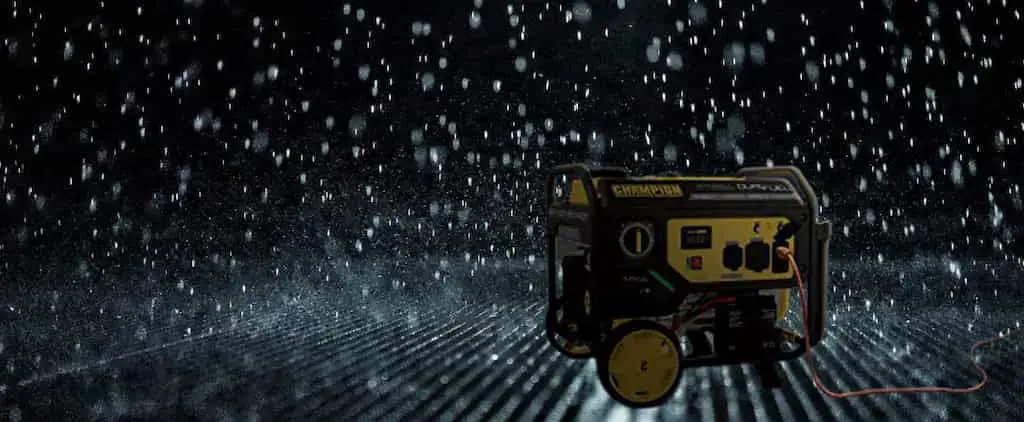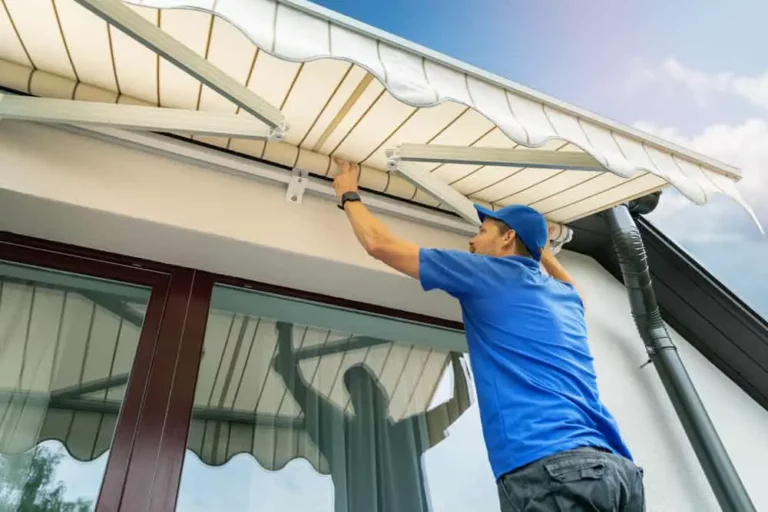What Do You Do if Your Generator Gets Wet?

Your generator can get wet due to a number of factors, such as an excessive outpour of rain, or water can break from anywhere else, causing flooding. When this happens, it isn’t usually palatable. You may not be able to make use of the generator, and it might even cause significant damage.
Follow these steps if your generator gets wet:
- Dry the generator.
- Decouple the generator.
- Fix specific parts and components.
- Put finishing touches.
- Recouple the parts.
Keep reading as I discuss how you should handle a water-logged generator in a way that ensures your safety. Also, I’ll discuss how to fix a flooded generator to get up and running once more.
What Happens if a Generator Gets Wet?
Generally, your electric generators shouldn’t be near too much moisture. However, the effect that wetness or exposure to moisture will have on a generator will depend on some factors.
If a generator gets wet, it can pose dangers, such as electrocution. Other problems include moisture entering critical parts of the generator, which can damage it. Too much water can also damage the fuel tanker. Water can also damage the generator’s engine.
That said, you should avoid getting your generator wet as much as possible.
Water Can Cause Electrocution
For one, the type of water that the generator comes in contact with may determine the level of danger you might be exposed to. If it’s fresh water, then the threat is a bit subdued.
However, you should be more concerned if it’s saltwater, as salt water is a good conductor of electricity. If the generator is still connected, be careful when getting close to the area immediately surrounding it.
Then, the degree or severity of exposure is an equally important factor. On the one hand, a few droplets of water in or around the generator shouldn’t do much harm. However, if the generator comes in contact with too much water, there can be severe problems.
One of those is electrocution. Portable electric generators produce a significant amount of voltage. If such high voltage comes in contact with too much wetness, there can be electric shocks if you touch any parts of the generator.
Moisture Can Damage Important Parts
Another effect that can arise from having your generator wet or dripping in water is that the moisture can get into critical parts of the generator. These are parts that usually don’t do too well if water touches them.
The fuel tanker is one. Whether diesel or gasoline, fuels don’t do well if they come in contact with water. Water mixing with your gasoline will cause the generator not to function correctly.
Another important section is the engine compartment.
This may have other implications. A malfunctioning generator isn’t suitable for the appliances that are connected to the electricity it supplies. You really don’t want to spend sums of money repairing or replacing gadgets that are rendered faulty due to your generator getting wet.
Thus, in the first place, you need to, as much as possible, avoid the generator coming in contact with water. However, whenever it does, you need to get it fixed.
Learn More!!!! Will A 12 000 Watt Generator Run A House?
How Do You Fix a Water-Flooded Generator?
If you have a water-flooded generator, you need to fix it. Here, I outline vital steps you can take to achieve this. These include:
1. Dry the Generator
The first thing you should do is get the generator to dry. Without a dry generator, you can’t achieve anything concrete if you try fixing it in that wet state.
The best method of drying should be laying the generator out in the sun. However, you might not have ready access to good sunlight, for instance, during an intense winter.
You may then try the hot blower, though it may not do as much good work as a proper drying in the sun.
I should warn you that this may be a somewhat lengthy process. You must first decouple the entire device and then set out to dry each tool therein.
2. Decouple the Generator
If the generator has come in so much contact with water that it causes it to malfunction, then chances are the water has made its way to the inner parts of the generator. These parts may not be easily reached if you just lay the generator as a whole in the sun.
You need to dismantle the generator into parts to get each compartment appropriately exposed to the sun or the blower.
I won’t be giving a general guideline to decoupling because of the variety of generators out there.
There are slightly different methods of decoupling for different types of generators. For instance, the process of dismantling a diesel generator may vary from one that is gasoline-powered. Even for each specific type, the diesel or gasoline generator, there are several manufacturers with somewhat diverse designs for their products. There are also different models and sizes.
If you got the generator newly, there should be an Operations and Maintenance Manual that guides such things as dismantling. If you don’t have access to it, you can go online and conduct a Google search for the manual. The search query might go thus:
“Manufacturer (e.g. Honda, WEN, Briggs & Stratton) + Model + Maintenance Manual + Pdf.”
3. Fix Specific Parts and Components
You must pay attention to almost all generator parts when fixing it after severe contact with water. However, some specific parts deserve some greater attention.
Fuel Tank
One of such parts is the fuel tank. Empty the tank and get it to dry in the sun or with a hot blower, as the case may be. If it was freshwater that got into the tank, then all you need to do is get it dry. If it’s saltwater, you need to oil it properly after drying.
Spark Plug
Take a look at the spark plug. The spark plug can easily get damaged from aggravated contact with water. To know if it’s damaged yet, you should wait for it to get dry and then test it by trying to switch on the generator. If the plug lets out a spark, then it’s still working. If not, you need to get a replacement.
You may, however, cut the process short by getting a spark plug tester like the Lisle 20610 Inline Spark Tester (available on Amazon.com). It can give you a visual check of the ignition system and easily diagnose the ignition system’s problems.
Air and Fuel Filters
You should then go over to the filters to check the air and fuel filters. If you feel the generator got very wet, then you should outrightly replace both. The reason is that, unlike the spark plug, they don’t give preliminary signs that they’re faulty until they malfunction and cause harm.
Others worthy of mention are the carburetor and the engine if the water trickles down there.
4. Put Finishing Touches
After drying, you may want to recouple the parts to get your generator, but I advise — not so fast. You must get the machine back to “generator mode,” which involves oiling the various parts, including the tank, the filters, engine, and more.
For one, the oiling removes the harmful effects left by, say, saltwater.
5. Recouple the Parts
After completing the above, it’s time to get your generator together and up and running again. If the generator still refuses to work, that likely means the generator may have a much bigger problem that may require professional repair or replacement.
Learn what to do when a Generator Blowing White Smoke Here’s What To Do
Final Thoughts
Your generator getting soaked in water doesn’t mean it’s completely damaged. It can still work correctly once again if you follow the steps provided above to fix it. The above steps should give proper guidance in helping you achieve this.
However, if your generator fails to work even after you’ve taken the steps given in this article, you may want to seek professional help or have the generator replaced.





